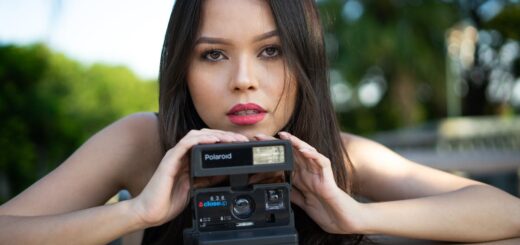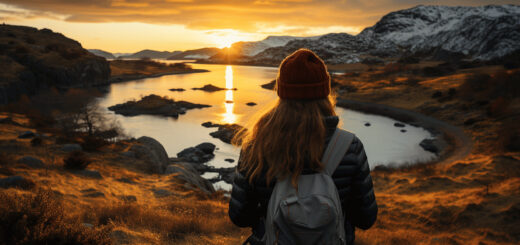Cinematic Techniques for Elevating Your Wedding Photography: Creating Mini Masterpieces
Wedding photography is an art that goes beyond just snapping pictures of the happy couple and their guests. It’s about capturing the essence of two individuals joining their lives together and creating memories that will last a lifetime. One way to take your wedding photography to the next level is by incorporating cinematic techniques. This approach not only adds a touch of drama and sophistication to your images but also helps you create mini masterpieces that your clients will cherish. In this comprehensive guide, we will explore various cinematic techniques you can employ to elevate your wedding photography, ensuring that every shot is worthy of being displayed on the big screen.
Table of Contents
- Preparing for the Big Day
- Capitalizing on Golden Hour
- Choosing the Right Lens
- Mastering Composition
- Incorporating Creative Lighting Techniques
- Post-production Tips
Preparing for the Big Day
Preparation is key to achieving a cinematic look in your wedding photography. Before the big day, it’s crucial to scout the location, research the couple’s preferences, and gather inspiration.
Scouting the Location
Visit the wedding venue well in advance to get a feel for the space and plan your shots accordingly. Look for interesting architectural features, natural elements, and sources of light that can be used to add depth and mood to your images.
Research the Couple’s Preferences
Spend time getting to know the couple and their unique story. Learn about their personalities, interests, and the overall theme of their wedding. Use this information to craft a visual narrative that reflects the essence of their relationship.
Capitalizing on Golden Hour
The golden hour, which occurs shortly after sunrise and before sunset, is the ideal time to shoot for when creating cinematic wedding images. The warm, soft light during this time enhances a sense of romanticism and adds depth to your photos.
Planning Your Shots
To make the most out of golden hour, develop a plan for your shots ahead of time. Ensure that you factor in the position of the sun throughout the day and the specific shots to capture during this time.
Making Adjustments in Post-production
If golden hour photography is not possible due to time constraints or unfavorable weather, you can still achieve a similar effect in post-production. Use photo editing software like Adobe Lightroom or Photoshop to adjust the temperature and tone of your images to mimic golden hour lighting.
Choosing the Right Lens
The lens you choose for your wedding photography can greatly impact the cinematic quality of your images. It is essential to have a variety of lenses at your disposal to achieve different effects and visuals.
Prime Lenses
Prime lenses have a fixed focal length and are known for their sharpness and ability to create beautiful bokeh. This makes them ideal for capturing intimate close-ups and candid moments during awedding.
Zoom Lenses
Zoom lenses offer versatility with their variable focal lengths, making them a practical choice for wedding photography. They allow you to quickly switch between wide-angle shots and close-ups without changing lenses, ensuring that you never miss an important moment.
Wide-Angle Lenses
Wide-angle lenses are perfect for capturing expansive scenes such as the entire wedding venue or large group shots. They also add a dramatic flair to your images, giving them that cinematic look.
Mastering Composition
Composition is the art of arranging elements within a frame to create a visually appealing and engaging image. Mastering composition can greatly enhance the cinematic quality of your wedding photos.
Rule of Thirds
The rule of thirds is a composition guideline that divides an image into nine equal parts using two equally spaced horizontal and vertical lines. Place your subjects or key elements along these lines or at their intersections to create well-balanced and visually interesting photos.
Leading Lines
Leading lines are compositional elements that help guide the viewer’s eye through an image. Look for lines such as pathways, walls, or architectural features that can direct attention toward your subjects when composing your shots.
Depth
Adding depth to your photos can make them more visually engaging and cinematic. Use foreground elements, like flowers or decorative elements, and layers to create a sense of dimension within your images.
Incorporating Creative Lighting Techniques
Lighting plays a crucial role in creating a cinematic look in your wedding photography. Experimenting with different techniques can add mood, dimension, and drama to your images.
Off-Camera Flash
Employing off-camera flash allows you to control the direction and intensity of the light, creating dynamic and visually compelling images. Experiment with different light modifiers, such as softboxes or umbrellas, to shape the light and achieve the desired effect.
Backlighting
Backlighting involves placing a light source behind the subject, creating a glow or halo effect around them. This technique adds mood and depth to your photos, making them feel more cinematic.
Silhouettes and Shadows
Use strong light sources and creative positioning to create dramatic silhouettes or cast interesting shadows, adding a sense of mystery and intrigue to your images.
Post-production Tips
Post-production is the final step in creating cinematic wedding photos. Enhancing your images through color grading, contrast adjustments, and careful retouching can elevate your photography to new heights.
Color Grading
Manipulate the colors of your images in post-production to create a specific mood or emulate the look of a film. Tools such as Look-Up Tables (LUTs) and presets can help you achieve a consistent and visually appealing color palette across your entire wedding photo collection.
Contrast and Clarity
Adjusting the contrast and clarity of your images can add depthand drama, providing that distinctive cinematic quality. Be cautious not to overdo it, as too much contrast can result in a loss of detail in the shadows and highlights.
Retouching
Carefully retouching your images, such as removing blemishes, softening skin, and enhancing details, can elevate the overall quality of your photos. Remember, the goal is to enhance the natural beauty of the couple and the venue, not to create a heavily edited or unrealistic look.
In conclusion, by incorporating cinematic techniques into your wedding photography, you can create breathtaking mini masterpieces that will stand out and be cherished by your clients for years to come. From preparation to post-production, focus on elevating every aspect of your work to achieve that cinematic quality that sets your images apart from the rest. With practice and dedication, you can master this approach and leave your clients in awe of the beautiful memories you’ve captured for them.



